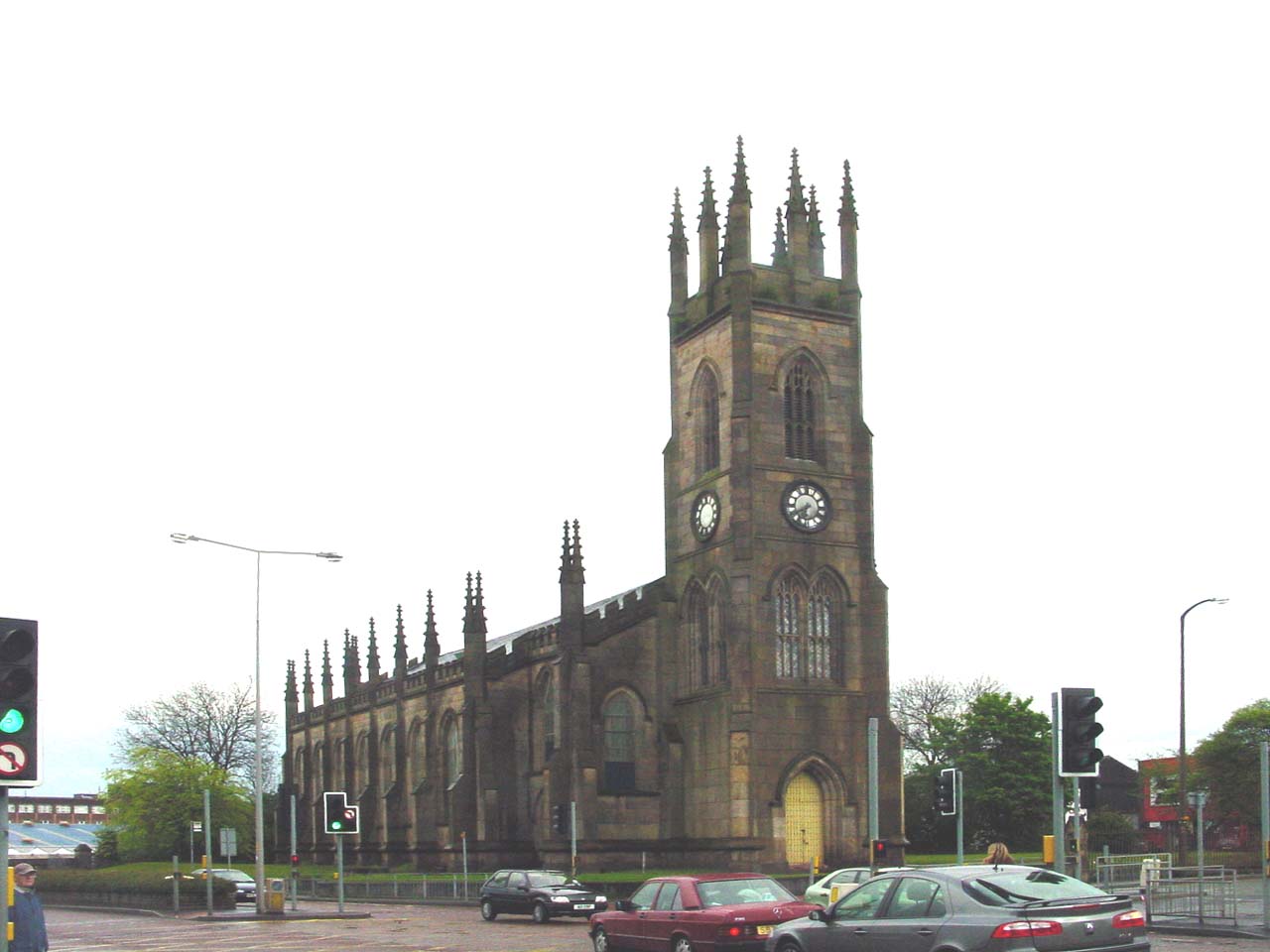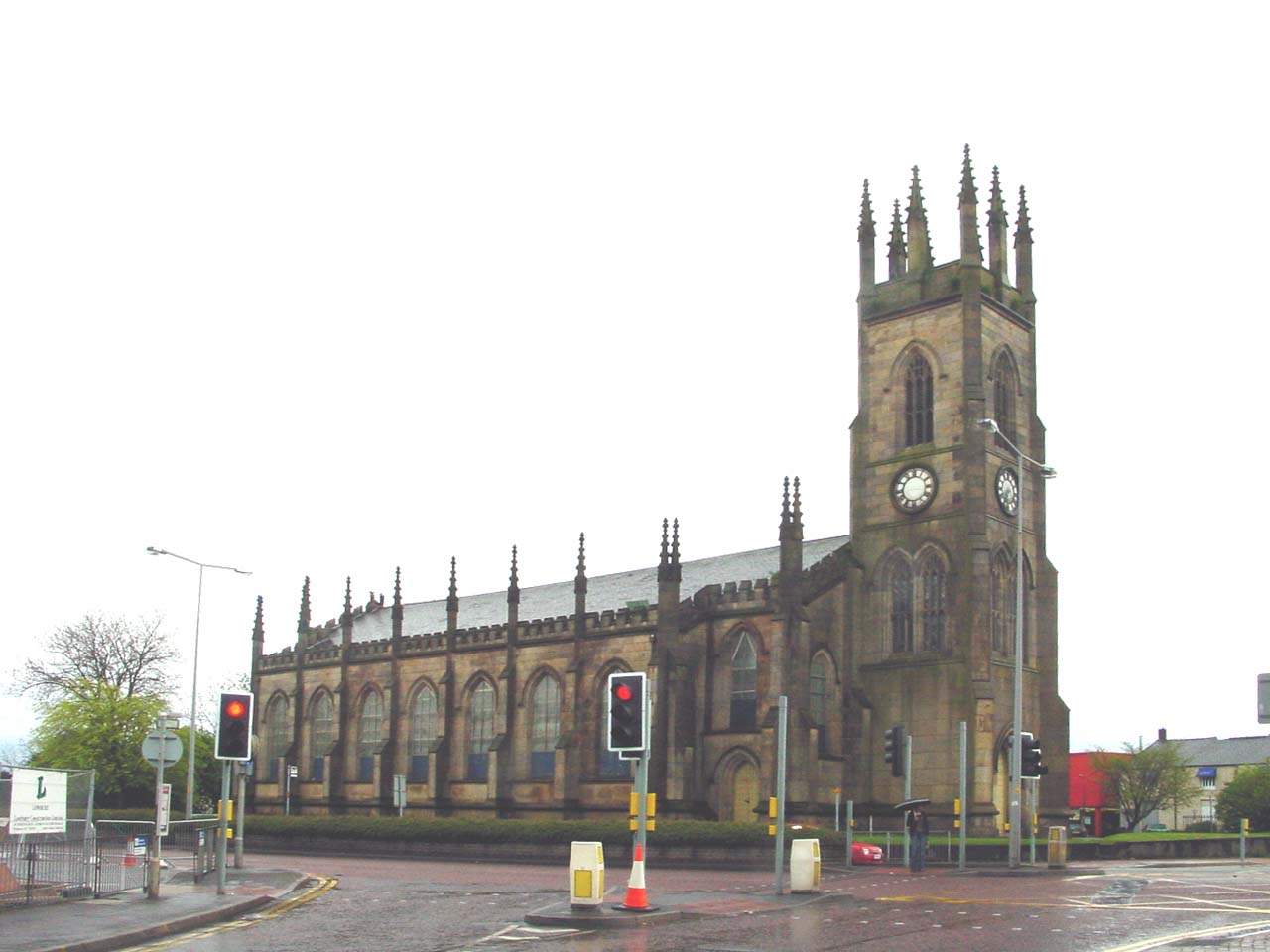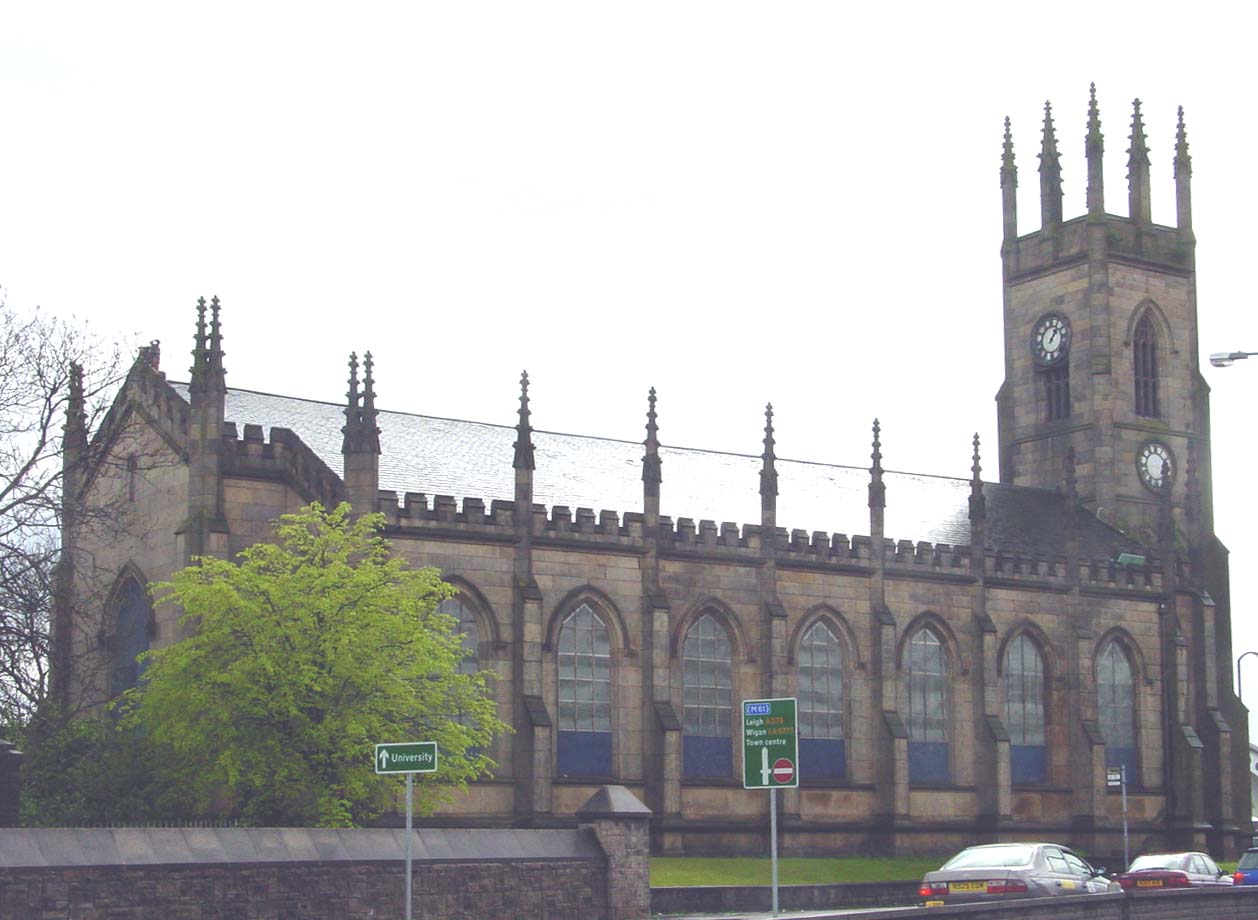 |
The
Church of the Holy Trinity, Great Bolton |
 |
 | |
From the Bolton Journal, March 7 1885, reproduced here by the kind permission of the Bolton News.
Holy Trinity Church, which is perhaps, with the exception of the Parish Church and that of All Souls, the handsomest ecclesiastical structure in the town, stands at the end of Newport-street, near the Lancashire and Yorkshire Railway Station. The style of the architecture is early English, and its cost close upon £15,000. The ceremony of laying the corner-stone was made the occasion of the most imposing Masonic demonstrations which has ever been witnessed in Bolton. It took place on June 7, 1823, the stone being laid by the Rev. Canon Slade, Vicar of Bolton. It was consecrated three years later, namely, on the 11th of September 1826. The population of the parish is 9,793. The number of sittings 1,901, 1,000 of which are free. The value of the living is £100 with the vicarage house, and the patron ? the Bishop of Manchester. Its lofty embattled tower contains a peal of six steel bells which were the gift of the late Dr. Chadwick, ?? a clock with four illuminated dials.
The interior of the church is comfortable and pleasing. The beautiful chancel window, which is stained glass, and represents "The Lord's Supper," was the gift of the late Mr. James Gorton, in 1859. The south window, which was erected in 1865, contains the following inscription: "To the glory of God, and in memory of the late Richard Hampson, surgeon, who was a worshipper in this church for thirty-seven years. This window was placed by the congregation, 1865." The pulpit, which is composed of pitch pine,walnut and alabaster, bears the following inscription:- "To the glory of God, and in memory of John Bayley, this pulpit was erected by his sons, A.D.1869." The organ which was purchased at a cost of £800, and was originally in the Manchester Cathedral, was presented by Miss Hampson, and contains the following inscription:- "This organ was presented to Holy Trinity Church by Ann Hampson, of Bolton, in affectionate remembrance of her brothers and sisters, A.D. 1874." The same lady also bore the expense of the recent decorations of the church.
Since opening of the Church in 1826, Holy Trinity has had six Vicars. the first was the Rev. John Jenkins, M.A. from 1826 to 1843; Then came the Rev. Alfred Hadfield, M.A., from 1843 to 1849; the Rev. Miles Chippendale Barto_ M.A., from 1849 to 1856; the Rev Joseph Lowe M.A., from 1856 to 1869; the Rev. Henry Haworth M.A., from 1869 to 1881; and the present Vicar, the Rev. Charles Lowe, M.A., who graduated at Trinity College, Cambridge, was ordained in 1866, officiated as curate of Worsley under the Rev. Canon Beech??, was afterwards stationed at Kersley Moor, and on the retirement of Mr. Haworth succeeded the gentleman in 1881. The curate is the Rev. S. T. Williamson, M.A. Mr. Lowe also occupies the position of Hon. Chaplain to the 2nd Battalion Loyal North Lancashire (Bolton) Regiment of Rifle Volunteers, succeeding the Rv. Canon Powell, Vicar of Bolton.
From the Bolton Journal and Guardian Friday July 12, 1935, reproduced here by the kind permission of the Bolton News.
Bolton's Notable Buildings No. 16 - Holy Trinity Church
Noble Town Church That Was Built From Government Funds
Holy Trinity Church was consecrated in 1826. Like Farnworth and Stand churches in style, it was also one of the £1,000,000 churches paid for from Government funds voted for that purpose after Waterloo. The building took three years to complete.
The site was then very favourable, set on the pleasant elevation known as "Sweet Green." "a place of fragrant gardens and picturesque houses," as a contemporary writer has it. Immediately facing the west door were a thriving orchard and garden stretching right up to Fletcher st. Stranger still, gipsy encampments occupied the land now used as a playground by the infants of Trinity School.
Newport st was a pleasant deep hollow of pastureland.
At that time the builders did not reckon on the erection of a big new railway station which later was to cut away a large slice of the churchyard.
The consecration ceremony was performed by the Bishop of Chester, in whose diocese Bolton was situated till the Manchester diocese was formed in 1847.
It is said that the first chanting of the psalms in Bolton took place at Trinity Church.
There is an amusing story told of the Rev. M.F.Barton, who was vicar from 1849 - 1856. It is said he used to ride to church on a horse, tether it to the railings outside the church and enter the church and conduct the service still wearing his spurs.
How many people have noticed that the clock on the Station side of the tower is considerably higher than those on the other sides? The reason for this is peculiar, but during the last century the "big men" in the parish would apparently do the most absurd things for the sake of their own convenience.
It is said that a wealthy man who lived somewhere in the region of Manchester rd, across the pleasant square (now obliterated by the railway Station) insisted on the clock being elevated so that he could see the time from his bedroom windows!
I have no doubt this is perfectly authentic, for I have heard of a man living about the same time near Horwich who had constructed a small hill and altered the course of a main road to give his residence greater privacy. Trinity Church is also interesting in that it has suffered two disasters. The first occurred on September 26th. 1915, when, at 12.20 a.m., a German Zeppelin attempted to bomb Trinity st station. The bomb fell short of its mark and crashed right through the roof of Trinity Church on the south side. A tablet marks the spot where the bomb landed, and, appropriately enough,the war memorial is placed adjacent to it.
It was fortunate the bomb did not explode, or the church would have been entirely wrecked. As it was a large hole was torn in the roof and gallery, and the dust caused damage to the organ.
In 1919 the bells were recast and re-hung, but within a few days of their consecration a disastrous fire damaged the tower and completely ruined them.
In 1920 the new bells were consecrated at a service conducted by the vicar, the Rev. T. Taylor-Evans, B.A., when the sermon was preached by the Rev.Canon Elsee, M.A.
The church contains fine oak alter rails and a beautiful oak reredos given by members of the parish. The organ, which is exceptionally fine and large, was presented to the church by a Miss Hampson in 1874. She had purchased it from Manchester Cathedral. More recently an electric motor has been added - the gift of another parishioner.
The most significant fact about the clock in recent years was that for long it did not work and had no fingers. For those hurrying down Newport st. to the station this was especially inconvenient. However, about three years ago an electric clock was given to the church by Mr. and Mrs. Sharples, and this is now one of the most efficient in the town.
The churchyard, which was closed in 1856, is now but a shred of its former self.
The building is dignified and impressive. Although its style is typical of the period, an air of intimacy is achieved by the gallery which runs round three sides of the church. The seating capacity is close to 2,000 and although it suffers slightly from its position, it has a fair congregation, and is always packed to the doors on sermons Sunday.
The present vicar is the Rev. H.A.Norton, who succeeded G.A.Deakin. Like so many churches in the centre of large towns and cities to-day, Trinity Church has lost something of it's former glory, because the district has so manifestly changed from its former wealthy residential character.
Manchester rd. still shows three of the old residences which comprised the parish of Holy Trinity - but while the old church lives on its character is greatly changed.
 | |
 | |
| Bolton Home & Contents | ©Lancashire OnLine Parish Clerks | Lancashire Home |